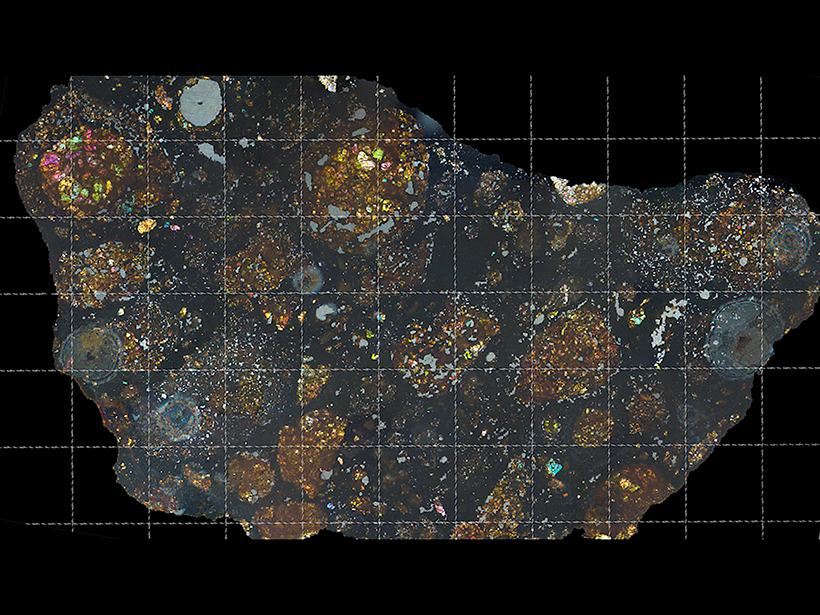Around 4.5 billion years ago—when our solar system was still a protoplanetary disk revolving around the young, dim Sun—a tiny fragment of a comet was captured by a passing asteroid. At some point, this asteroid broke into pieces, one of which streaked through Earth’s atmosphere and landed in Antarctica, where it was discovered in 2002.
The newly described comet within a meteorite is highly unusual because comets and asteroids are formed in different far-flung regions of the solar system.
A new study analyzed this unique artifact, the first comet within a meteorite found to date, and the results are providing a rarely seen glimpse of the formative years of our solar system.
The newly described comet within a meteorite is a type of primitive carbonaceous chondrite known as LaPaz Icefield 02342 for the location where it was found in the LaPaz ice field in Antarctica. It is highly unusual because comets and asteroids were formed in different far-flung regions of the protoplanetary disk around 4.5 billion years ago, says Larry Nittler, a cosmochemist at the Carnegie Institution of Washington and lead author of the new study, published in Nature Astronomy.
“Comets and asteroids formed by the same process of dust accretion, but they’re chemically different because of the conditions of where they formed,” Nittler says.
Comets hail from the colder outer reaches of the disk and typically contain a lot of ice and organics like carbon, whereas asteroids are primarily rocky bodies that formed in the warmer inner disk closer to the Sun. When pieces break off from comets or asteroids, they are known as meteors. Meteors become meteorites if they survive Earth’s protective atmosphere and land on the surface.

Previous studies have shown that materials from the inner solar system may have sometimes been transported to the outer solar system but, so far, not the other way around.
“This idea that dust and debris from the outer solar system may have moved inwards to interact with asteroids forming in the inner solar system is something we don’t have a lot of evidence for yet,” Nittler says.
Despite the star-crossed origin story of the comet within a meteorite, the evidence that the carbon-rich inclusion hidden inside the LaPaz meteorite came from a comet is clear, says Jean Duprat, an astrophysicist at the University of Paris who was not involved in the new study.
“There are at least two strong lines of evidence that this inclusion came from a comet or protocomet that formed in the outer solar system,” Duprat says.
The high organic content of the embedded clast indicates it formed in a very cold setting, far from the Sun. And the mineral content of the sample also contains mineral phases associated only with cometary material.
“Not only is it part of a comet, it’s part of a very ancient comet. It’s not like looking at a piece that broke off recently. It’s a relic. From that perspective, this really is an amazing find.”
“Not only is it part of a comet, it’s part of a very ancient comet. It’s not like looking at a piece that broke off recently. It’s a relic,” Duprat says. “From that perspective, this really is an amazing find.”
The next step, both Nittler and Duprat agree, will be to dig through the extensive meteorite archives to search for examples of comets hidden within meteorites.
“We are starting by looking at meteorites of the same type as this one,” including other sections of the same meteorite, LaPaz Icefield 02342, using a scanning electron microscope, among other tools, Nittler says. “If we never find another example, we will chalk this one up as an extreme oddity. But if we find more, it could have implications for how we model the dynamics of the early inner and outer solar system.”
—Mary Caperton Morton (@theblondecoyote), Science Writer
Citation:
Morton, M. C. (2019), Meteorite’s hidden treasure: A comet, Eos, 100, https://doi.org/10.1029/2019EO121865. Published on 24 April 2019.
Text © 2019. The authors. CC BY-NC-ND 3.0
Except where otherwise noted, images are subject to copyright. Any reuse without express permission from the copyright owner is prohibited.

